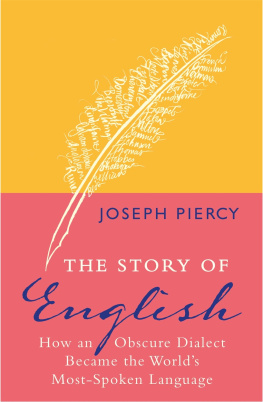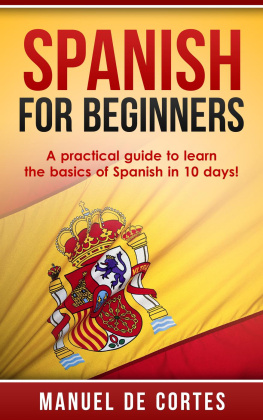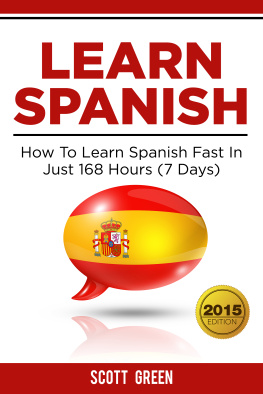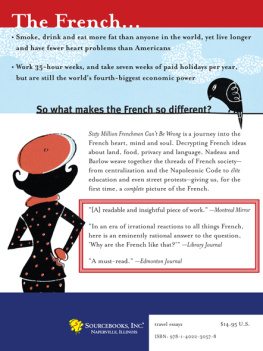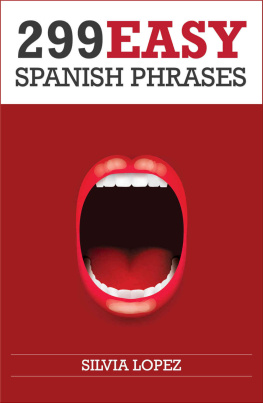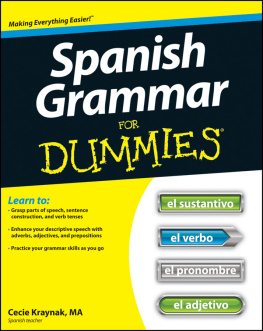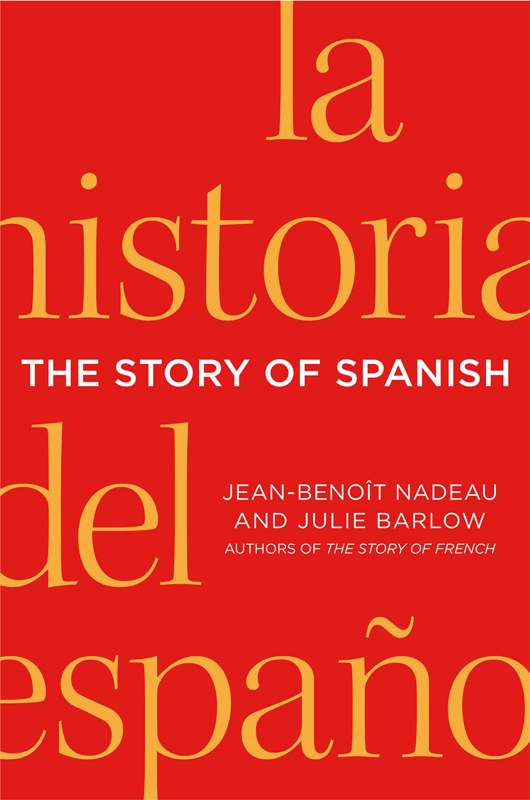Jean-Benoit Nadeau - The Story of Spanish
Here you can read online Jean-Benoit Nadeau - The Story of Spanish full text of the book (entire story) in english for free. Download pdf and epub, get meaning, cover and reviews about this ebook. year: 2013, publisher: St. Martins Press, genre: Detective and thriller. Description of the work, (preface) as well as reviews are available. Best literature library LitArk.com created for fans of good reading and offers a wide selection of genres:
Romance novel
Science fiction
Adventure
Detective
Science
History
Home and family
Prose
Art
Politics
Computer
Non-fiction
Religion
Business
Children
Humor
Choose a favorite category and find really read worthwhile books. Enjoy immersion in the world of imagination, feel the emotions of the characters or learn something new for yourself, make an fascinating discovery.

- Book:The Story of Spanish
- Author:
- Publisher:St. Martins Press
- Genre:
- Year:2013
- Rating:5 / 5
- Favourites:Add to favourites
- Your mark:
The Story of Spanish: summary, description and annotation
We offer to read an annotation, description, summary or preface (depends on what the author of the book "The Story of Spanish" wrote himself). If you haven't found the necessary information about the book — write in the comments, we will try to find it.
Just how did a dialect spoken by a handful of shepherds in Northern Spain become the worlds second most spoken language, the official language of twenty-one countries on two continents, and the unofficial second language of the United States? Jean-Benot Nadeau and Julie Barlow, the husband-and-wife team who chronicled the history of the French language in The Story of French, now look at the roots and spread of modern Spanish. Full of surprises and honed in Nadeau and Barlows trademark style, combining personal anecdote, reflections, and deep research, The Story of Spanish is the first full biography of a language that shaped the world we know, and the only global language with two names--Spanish and Castilian.
The story starts when the ancient Phoenicians set their sights on The Land of the Rabbits, Spains original name, which the Romans pronounced as Hispania. The Spanish language would pick up bits of Germanic culture, a lot of Arabic, and even some French on its way to taking modern form just as it was about to colonize a New World. Through characters like Queen Isabella, Christopher Columbus, Cervantes, and Goya, The Story of Spanish shows how Spains Golden Age, the Mexican Miracle, and the Latin American Boom helped shape the destiny of the language. Other, more somber episodes, also contributed, like the Spanish Inquisition, the expulsion of Spains Jews, the destruction of native cultures, the political instability in Latin America, and the dictatorship of Franco.
The Story of Spanish shows there is much more to Spanish than tacos, flamenco, and bullfighting. It explains how the United States developed its Hispanic personality from the time of the Spanish conquistadors to Latin American immigration and telenovelas. It also makes clear how fundamentally Spanish many American cultural artifacts and customs actually are, including the dollar sign, barbecues, ranching, and cowboy culture. The authors give us a passionate and intriguing chronicle of a vibrant language that thrived through conquests and setbacks to become the tongue of Pedro Almodvar and Gabriel Garca Mrquez, of tango and ballroom dancing, of millions of Americans and hundreds of millions of people throughout the world.
Jean-Benoit Nadeau: author's other books
Who wrote The Story of Spanish? Find out the surname, the name of the author of the book and a list of all author's works by series.


